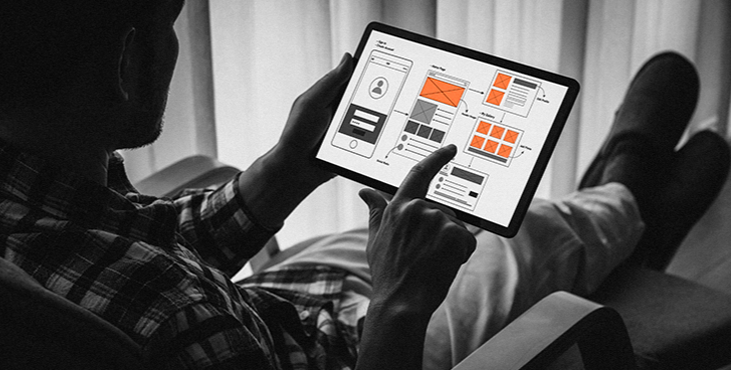
What is UX/UI design
The term UX comes from 1993 it was first mentioned by Apple corporation and the full version of the definition is User eXperience. As the popularity of mobile devices grows day by day, this concept became a growing trend. But even now there are not so many people who can say what UX-design is, how it differs from UI-design and why they are often mentioned together. Today we will make everything clear.
What is UX-design?
It was mentioned above that UX means user experience. UX-design of mobile applications and websites defines the impressions a person will get from using them and the way he will use these products.
Where is the best place to put the login to a personal account? How many steps should a user go through to subscribe to a newsletter or place an order? How will he understand that the operation was successful? These are the kinds of questions UX-designer solves.
UX-design includes different components:
- information architecture;
- interactive design;
Usability (a measure of simplicity, convenience and efficiency of the product in the eyes of users).
UX-designer understands the psychology and emotions of users, analyzes their expectations from the product and sets a goal to be achieved. Then they choose the appropriate tools and come up with an application or site structure that meets all the necessary parameters.
The disassembled puzzle.
A raw website or app idea is like a disassembled jigsaw puzzle. The skills of the UX-designer make a clear structure out of these pieces.
A UX-designer's tasks are never monotonous, so different projects often require people with skills from different fields. There are entire laboratories with powerful technical equipment, in which a team of several people works on research. In these labs, there are devices that capture the psychophysical reactions of users (such as eye movements and heartbeat), they conduct surveys, observe the users, and so on.
It's important for UX designers to be able to:
- Conduct user research;
- Create prototypes of websites and applications. This will help assess in which direction to move forward with the app or website. The ability to draw is not a necessary skill for today's UX-designer. There are many tools for prototyping, where an experienced designer can create a competent visualization of the interface (for example, Axure, Balsamiq or UXPin);
- Design interaction, i.e. imagine how exactly a person will use the product. To do this, create maps of user paths through application screens, interactive frameworks of websites and applications with different design options;
- test the product;
- engage in analytics. Using different metrics (like Webvisor, Hotjar, Mixpanel, UXcam, or Appsee) will help you understand how effectively the design works and refine the product based on real data.
What is UI design
User interface design or UI design is the visual implementation of UX design. Its task is to make an application or website nice and easy to use.
A UI-designer is responsible for how each individual screen or page will look. His area of responsibility is the visual of the controls such as buttons and checkboxes, color schemes, fonts, and various visuals.
How should a button look so it's easy to click? What font size should I choose to make the text easy to read? How should an error message be designed so that it is attractive but not annoying? UI interface design helps find answers to these questions.
The UI-designer uses different graphic editors: Photoshop, Illustrator, Sketch, Fireworks, Adobe XD, Gravit Designer, Affinity Designer, Figma.
Tell us what you think
By clicking 'Submit', you agree to Privacy Policy and authorise our staff to contact you. You are liable under the Personal Data Protection Act if you key in false personal data or other people’s personal data.
offers and news
